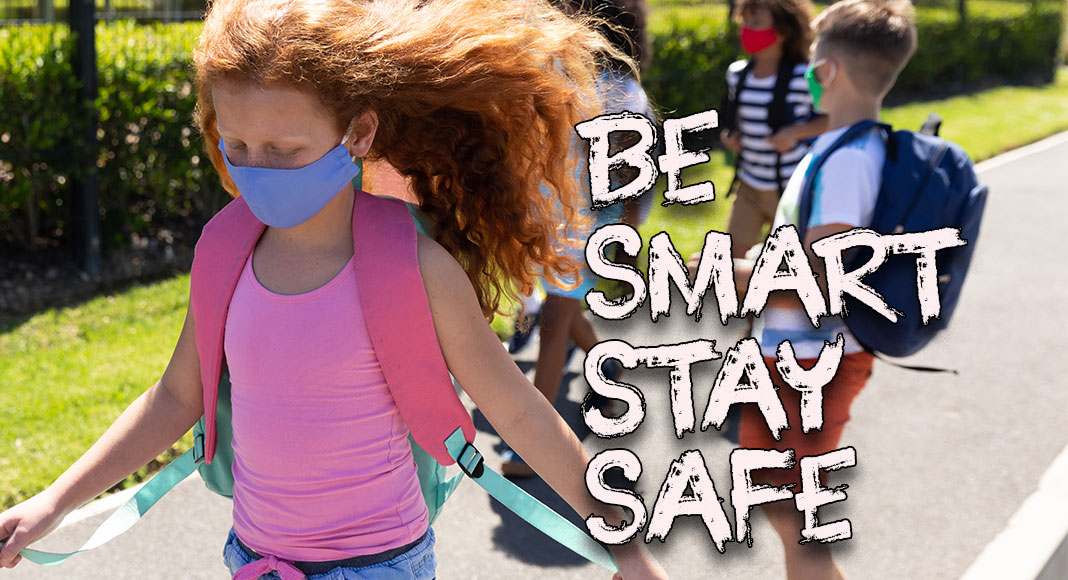
Mega Doctor News
By Children’s Hospital Los Angeles
Newswise — With back-to-school season upon us, kids and parents are naturally excited for some return to normalcy. In addition to putting together school supplies and mapping out schedules, there’s another thing parents should do: teach kids how to walk to school safely.
“Some of the most unsafe areas for children are right around their school or their home,” says Helen Arbogast, DrPH, MPH, CPSTI, Manager of the Injury Prevention Program at Children’s Hospital Los Angeles. “That’s because kids tend to feel comfortable around places they frequently visit and don’t always pay attention to cars that may be moving in a parking lot, down the road or in a drop-off line.”
This school year especially presents safety risks because many kids haven’t walked to school since the pandemic began, if ever, and parents may be a little rusty in their drop-off and pick-up habits.
“Kids are going to be excited and anxious and all of that can lead to distractions,” says Dr. Arbogast who recommends practicing walking to school ahead of the big day. And if you drive, visit the school beforehand and teach kids how to safely get in and out of the car.
It’s also a good idea for parents to talk to school administrators about creating a drop-off zone. Schools should have a “safety valet,” a person responsible for directing cars and making sure kids are not in the path of moving vehicles. If the drop-off gets crowded, consider parking a few blocks away and walking the rest of the way, Dr. Arbogast says.
“The younger children are, the more practice they should get,” she adds.
Here are more tips on how to keep children of all ages safe.
Infants
Many injuries occur from strollers tipping over and the baby falling out, according to Dr. Arbogast. It’s important to remember to buckle your baby into the seat, whether it’s a stroller with harness straps or the kind that has a car seat that attaches to it, and to double check that the seat is properly attached to the frame.
Another thing to keep in mind: Don’t hook your dog’s leash to the stroller. Even the most well-behaved dogs can run off, taking the stroller—and baby—with them. And lock the wheels while pausing with the dog or doing anything else.
“A lot of times the stroller is the first thing that leaves the sidewalk into the street,” Dr. Arbogast says.
Avoid streets without sidewalks and walk during times where there is less traffic. Most strollers are quite dark and can’t be seen well when the sun goes down. Put reflective stickers on the outside and consider wearing bright-colored clothes so drivers can see you. Dr. Arbogast also points out that some companies sell stroller wheels that light up when they are in motion—something older children will find fun to walk next to as well.
Toddlers and preschoolers
Routine is key to getting kids 5 and under to do things safely. Dr. Arbogast suggests starting out by teaching young children pedestrian safety in a non-busy area such as in a pathway at a park. Talk to them about holding your hand, looking both ways before crossing any road and staying away from cars. For toddlers who try to run into the street, a safety leash will keep them close to you. Short walks are best for this age group. And consider making tiny tikes visible to big cars by outfitting them in bright colors and putting reflective stickers on their clothes.
Dr. Arbogast shares a trick she uses with her 3-year-old daughter: She asks her to carry a plush animal with reflective stickers when they go for a walk. “Toddlers are less likely to run when they are holding something,” she says.
Ages 6 to 9
Children in this age group seem more mature, but they haven’t yet developed the capacity to gauge speed and distance. Many injuries in this age group occur from children darting out into a street, such as to collect a ball, and thinking a car is traveling much slower than it is. They also tend to freeze when seeing a car backing out of a driveway.
Dr. Arbogast has observed through her research that when children are walking with their parents, they almost never look both ways before crossing the street and instead defer to what their parents are doing.
“We deliberately teach kids so many things, but not when walking with them,” Dr. Arbogast says. “If they aren’t watching us when we’re crossing a street, they may miss that we looked left and right and left again. They might think, ‘Mom stepped out so I’m going to step out.’”
It’s important, therefore, to narrate the safe things you are doing while walking, and to teach children the following practices:
- Cross only at crosswalks.
- Make eye contact with drivers.
- Wave to drivers to make yourself visible.
- Look completely left, right and left again before crossing a street.
- Pause at driveways and check if a car is pulling out.
- Stay close to an adult when walking through parking lots.
In addition, although many kids ride scooters for fun, they are never a good way to travel to and from school. “It’s too much for them to manage. They are having to balance themselves and keep up speed,” says Dr. Arbogast. “They are not thinking about stopping before driveways or crosswalks.”
Ages 10 to 12
At age 10, some children may be ready to walk to school without an adult, Dr. Arbogast says. She encourages these children to walk in groups of three or more because two kids walking together tend to focus on their conversation and could get distracted.
“The more the better. It’s like a walking school bus,” Dr. Arbogast says.
Clothes with reflective stickers are probably not going to be too popular with older kids, but you can put the stickers on their backpacks. Parents should also identify a consistent route in a less busy area for children to use.
As for music, tell tweens no music while walking.
“It keeps you from being able to hear some of these really quiet electric cars,” Dr. Arbogast says.
Finally, teach your kids this favorite motto from Children’s Hospital Los Angeles: Heads up, phones down.
Teenagers
This is the age group at most risk for being injured on the street. Children ages 12 to 19 are almost four times more likely to get hit by a car than younger kids, Dr. Arbogast says. “We take for granted that they are older and make some assumptions about their ability,” she says.
Teens often venture out on routes that take them beyond their school. Advise them to walk through residential neighborhoods and to try to avoid large, busy streets. Repeat safety advice and be specific when doing so.
“Before they go, don’t say something general like, ‘be safe,’ because what does that mean?” Dr. Arbogast says. “Your advice could instead be, ‘Make sure you are really careful before crossing Santa Monica Boulevard because you know people run that light.’”
Most importantly, parents should always mirror the behavior they want their kids to follow. “Cross at intersections even if means walking a little further, and put the phone down,” Arbogast says.











